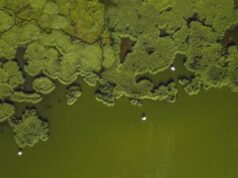The 2019/20 Black Summer bushfires are a “wake up call” demonstrating the extreme effects of climate change in Australia, according to a group of experts who’ve published a new study examining the factors that caused the disaster.
The study concludes that improving the methods used to adapt to the now inevitable increase in fire risk here in Australia, while also pursuing urgent global climate change mitigation efforts is the best strategy for limiting further increases in fire risk.
The authors warn fire disasters like the Black Summer are made worse by human-caused climate change in multiple ways; some of which are very well understood and some where more research is needed. These combined climate change impacts mean that bushfires are expected to rapidly become even more severe in southeast Australia.
Lead author Professor Nerilie Abram from The Australian National University (ANU) said the Black Summer fires were unprecedented in their scale and power, as well as the number of fires that transitioned into extreme pyrocumulonimbus events—extremely dangerous fires that generate their own thunderstorms.
“In the lead up to the summer of 2019/2020 many parts of southeast Australia were three years into severe drought,” Professor Abram said.
Find your dream job in the space industry. Check our Space Job Board »
“2019 was our hottest and driest year on record. This climate set-up created exceptionally dry fuel loads that primed the landscape to burn, and dangerous fire weather that allowed fires to quickly escalate. Our new work highlights the strong evidence that southeast Australia’s climate has shifted, and that this type of fire weather is becoming more frequent, prolonged and severe.”
The team involved in this work includes climate experts from the ARC Centre of Excellence for Climate Extremes and bushfire experts from the NSW Bushfire Risk Management Research Hub. The work of these experts supported the NSW Bushfire Inquiry and the Federal Government Royal Commission in the wake of the Black Summer disaster.
“Bushfire risk is complex and driven by many factors operating at multiple scales, but this study is a timely reminder of how critical climate and weather extremes are,” Dr. Hamish Clarke from the NSW Bushfire Risk Management Research Hub said.
According to Professor Abram, while scientists have been warning climate change would increase Australia’s fire risk for decades, the Black Summer event was a clear demonstration of what that future looks like.
The study points out that predications made more than 10 years ago that an increase in climate-driven fire risk would be directly observable by 2020 appear to have come true
This new work follows an open letter, released during the height of Australia’s Black Summer fire crisis and signed by more than 400 climate and fire experts from across the world, warning of the ways climate change is increasing bushfire risk in Australia.
“During the Black Summer fire disaster it became clear that there was an urgent need for a clear assessment of what we know—and what we don’t yet fully know—about how climate change will alter Australia’s fire risk in the future,” Professor Abram said.
“When we look to the future we see southeast Australia continuing to become even hotter because of human-caused climate change. On top of that climate change is altering our patterns of year-to-year climate variability so that we expect extremely hot and dry years to occur more often.
“There are also indications that southeast Australia could continue to become drier in winter and experience more frequent weather fronts in summer that cause dangerous fire weather, but more research is needed to fully understand how these fire-relevant impacts of climate change might develop.
“All of those expected and possible climate change indicators point towards a rapidly increasing risk of catastrophic bushfires that are beyond anything we have experienced in the past.
“We don’t expect every summer to be like 2019/2020—and this La Niña year is a good example of that. But we can’t look at climate change as something in our future or something that we can simply adapt to. It’s here now, and we need to make choices now that put us on a lower risk pathway.
“We saw during our Black Summer how severe bushfires in Australia can be, how damaging and sustained. It’s a trend we can expect to continue to worsen unless we rapidly reduce greenhouse gas emissions,” Professor Abram said.
The research has been published in Communications Earth & Environment.
Provided by: Australian National University
More information: Nerilie J. Abram et al. Connections of climate change and variability to large and extreme forest fires in southeast Australia. Communications Earth & Environment (2021). DOI: 10.1038/s43247-020-00065-8
Image: Moreton National Park after the Currowan fire of January 2020. Credit: The Australian National University











